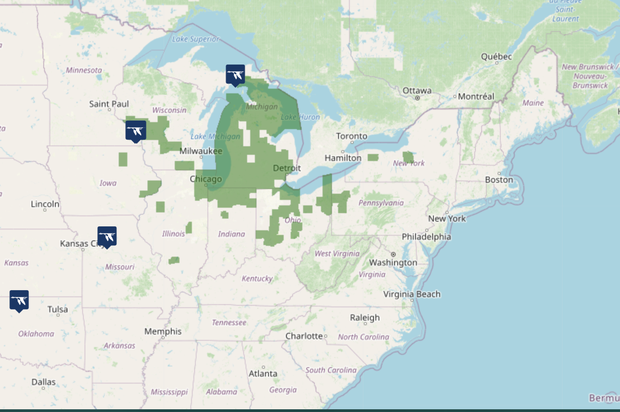An annual snake survey in Ohio revealed an unexpected find – an eastern Massasauga rattlesnake, an “increasingly rare” snake in the state that is considered threatened.
The Ohio Department of Natural Resources said one of its officers in Huron County found the rattler in May. Officials captured the snake, recorded its measurements, and then released it back into the wild.
Ohio Department of Natural Resources/Facebook
Eastern Massasaugas are “small snakes with thick bodies, heart-shaped heads and vertical pupils,” according to the U.S. Fish and Wildlife Service. They only grow to be about 2 feet long and have gray or light brown skin with “chocolate brown blotches on the back.” Those considered melanistic appear as all black. They’ve been found in Illinois, Indiana, Iowa, Michigan, Minnesota, New York, Pennsylvania and Wisconsin.
They’ve also been found in more than 30 counties in Ohio, but according to Ohio State University, Massasaugas have “become increasingly rare” – both through the state and its range as a whole. They’ve only been seen in nine counties since 1976. Extensive farming significantly reduced their populations in the state, though many of their colonies continue to exist in bogs, swamps and wet prairies, according to the Ohio Division of Wildlife’s reptile field guide.
U.S. Fish and Wildlife Service
Otherwise known as “swamp rattlers” or “black snappers,” Massasaugas are not the most active of snakes. According to the Division of Wildlife, they are typically “very sluggish and make little or no attempt to bite unless thoroughly provoked.” Their diet mostly consists of small rodents, but they will also eat frogs and other snakes.
And that is a good thing, as their venom “is highly toxic,” the division said. A typical Massasauga bite doesn’t deliver a high enough quantity of venom to be fatal to healthy adults, but officials warned that “this is still a venomous snake…and should be treated with utmost caution and respect.”
The species is considered threatened under the Endangered Species Act, according to U.S. Fish and Wildlife, and is one of only three venomous snake species in Ohio.


